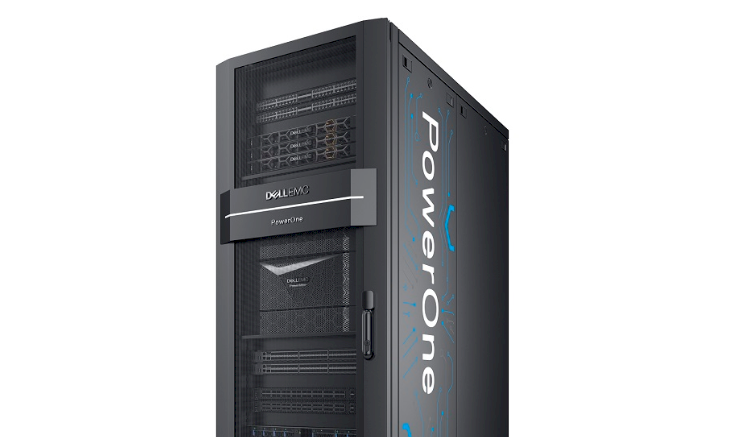
Traditional datacenter infrastructure suppliers have a complicated relationship with the cloud.
On the one hand, enterprise adoption of the cloud is accelerating, and the expansion into multiple clouds and hybrid clouds, a combination of public clouds and on-premises datacenters, means organizations are moving at least some of their mission critical workloads into the cloud. This was unusual only a few years ago. The rise of hyperscalers and large cloud services providers have given OEMs like Hewlett Packard Enterprise, Dell EMC, Lenovo, IBM, and others new infrastructure-hungry customers they can sell their products into.
And yet, on the other hand, the IT suppliers want to sell into enterprises, which is a more profitable proposition than selling into the few big hyperscalers and cloud builders. Enterprises are attracted to the cloud for myriad reasons, from the agility and scalability of the infrastructure itself, but the big attraction is that infrastructure can be consumed in a pay-as-you-go fashion. Infrastructure transitioned from something that had to be bought upfront as a capital expense to something that is an operational expense. As organizations have adopted hybrid cloud strategies, there also has been increase in demand for greater consistency between their cloud-based and on-premises environments.
Established OEMs over the past several years have worked to evolve their business models to address the needs of customers for less complexity and more on-demand and more cloud-like capabilities in their on-premises environments, and to be able to acquire those capabilities in a more opex-like manner. For example, Cisco Systems has been vocal about its transformation from a networking box maker to a software and services provider that relies increasingly on recurring revenue than one-time capex payments and puts more autonomous and on-demand capabilities into its products. Like other vendors, Cisco also understands the increasingly hybrid nature of the future of infrastructure and the need to ensure that an organization’s cloud and on-premises infrastructures can essentially be operated as a single environment.
As we have written about in The Next Platform, HPE is making its GreenLake hybrid cloud, consumption-based platform a central element of its efforts going forward. GreenLake, rolled out last year, essentially enables organizations to consume HPE products as a service and pay for them on an as-used basis. The vendor continues to add capabilities into GreenLake – including extending it into the midmarket and embracing VMware Cloud users – and also as the foundation of its initiative to make all of its product portfolio available as a service starting in 2022.
This week, Dell Technologies made significant steps in this arena this week with the introduction of an on-demand on consumption-based program for its datacenter infrastructure products. At the same time, the company introduced the Dell EMC PowerOne, an autonomous infrastructure offering that integrates its PowerEdge servers, PowerMax storage, PowerSwitch networking and VMware virtualization into a single system. It also automates many current manual steps like configuration and provisioning via a built-in intelligence engine – the PowerOne Controller – that uses a Kubernetes microservices architecture and Ansible workflows.
The PowerOne system also is available within the Dell Technologies on Demand initiative and through the company’s multiple consumption-based pricing structure.
“IT organizations are under a lot of pressure right now to deliver cloud-like outcomes,” Jon Siegel, vice president of product marketing for network and solutions at Dell, said during an online briefing before the company’s news was announced. “The status quo approach of building their own datacenter just simply can’t keep up with the demands of the cloud era. Complexity is really the enemy here and as we look forward, with automation now is becoming more and more used. Automation is the way to drive out complexity and has led to an increase in spending on all things automation for on-prem, including tools like Puppet, Chef, and Ansible. While some tasks and operations have been automated at different layers of the stack, the reality is that building and maintaining this automation is still complex human work and the skills simply are not there yet.”
PowerOne, which will be generally available later this month, comes with a single API, which enables organizations to create pools of infrastructure resources based on business needs and can be leveraged to drive programmable operations, with the result being the ability to quickly create VMware clusters. Dell also is including in the system its PowerEdge MX, the foundational compute element of its Kinetic initiative, it effort around composable infrastructure. The PowerOne also includes the PowerMax storage array, the successor to Dell EMC’s all-flash VMAX systems that was introduced in 2018 and most recently was enhanced with NVM-Express capabilities throughout and the use of storage-class memory (SCM).
Dell will have to navigate an on-demand and pay-per-use path that already includes HPE and GreenLake as well as most cloud services providers, including Amazon Web Services (AWS), Microsoft Azure and Google Cloud, all of whom are looking to push their way into on-premises datacenters via hardware (AWS and its Outposts appliances) and software (Azure Stack and Google Anthos) to essentially catch both ends of the hybrid cloud environment. Sam Grocutt, senior vice president of product marketing for Dell, said during the online press conference that the differentiator will be being able to address complexity while offering high-end technology.
“Some vendors today are addressing only a limited part of the IT ecosystem, which actually may introduce more complexity than it resolves,” Grocutt said. “Some of them are offering a one-size-fits-all approaches to as-a-service with very fixed and rigid configurations that restrict the ability to optimize certain workloads. Then there’s some vendors out there that are providing solutions for as-a-service, but essentially, they’re hiding the fact that they’re using subpar technology underneath the hood or they’re hiding that underneath a program that doesn’t really give customers sufficient transparency and awareness to the long-term TCO implications of moving to an as-a-service model.”
The Dell Technologies on Demand program covers most datacenter infrastructure as well as solutions from Dell Technologies Cloud and Dell Technologies Unified Workspace, including PCs. Key to all this are the various consumption-based pricing models that are familiar to cloud environments and becoming increasingly so in datacenters. Dell’s pricing models include pay-as-you-go that enable enterprises to align payments to deployment schedules. There also is Flex On Demand, a set of monthly metered solutions where organizations select the total compute or capacity needed based on flexibility and cost and then scale up or down as needed. The capacity is paid for only when it’s consumed. The last is Data Center Utility.
Through Data Center Utility “Enterprises can scale up or down as required, PaaS [platform-as-a-service] is delivered as needed, procurement is streamlined and automated billing is simplified and reporting is standardized across the board,” Grocutt said. “Managed services are often delivered as part of this solution, so our opex-structured, flexible consumption offers help organizations more predictably budget for IT spending, pay for technology as it’s used and achieve optimal total cost of ownership over the full technology lifecycle. In addition to flexible consumption models, we offer value added core services that can be attached at any opportunity.”
Those services involve deployment (ProDeploy) and support using artificial intelligence (AI) and machine learning (ProSupport).

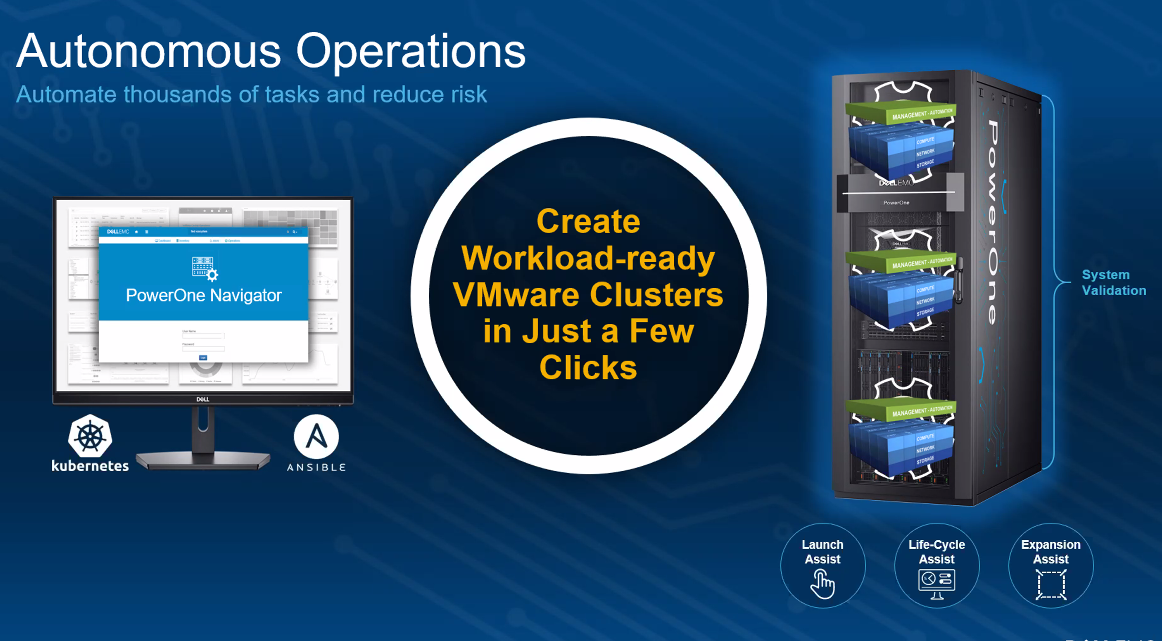
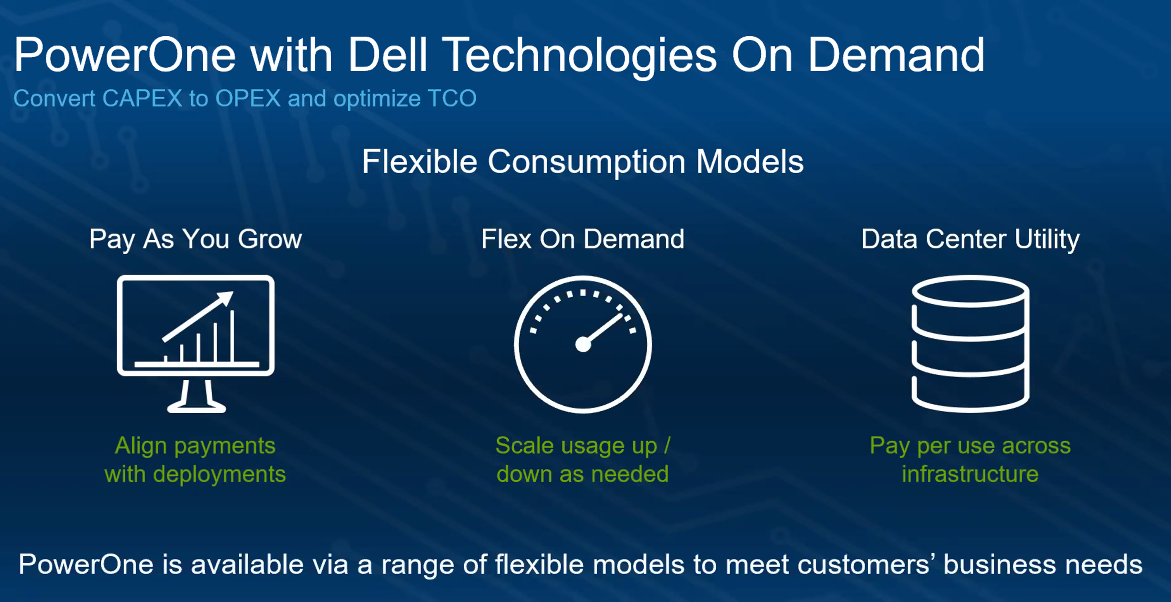

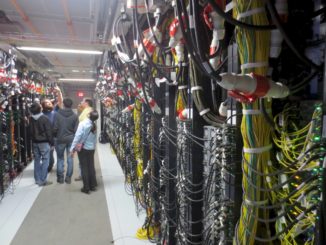

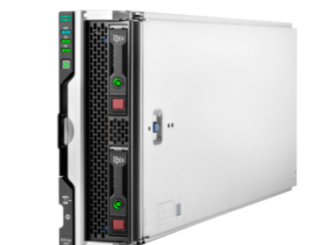
Be the first to comment